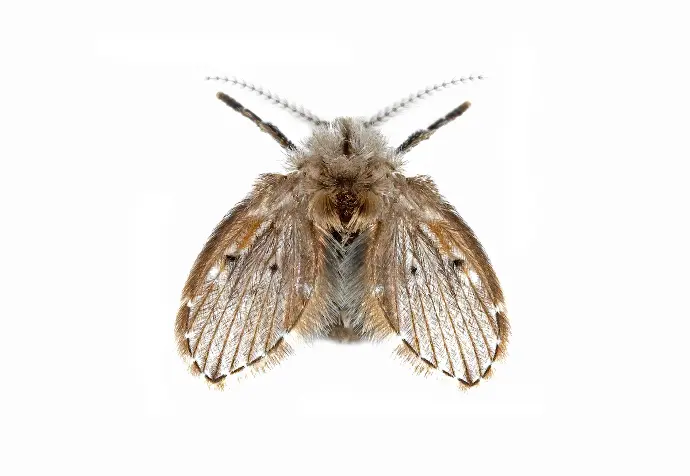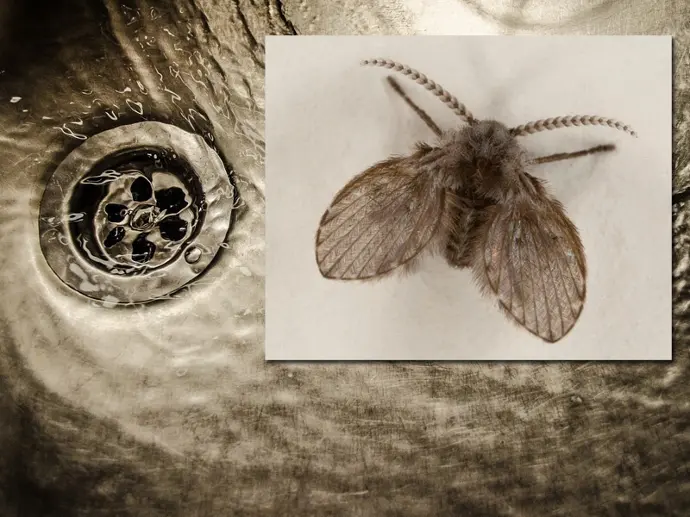Restore Your Space: Effective Drain Fly Solutions at Your Fingertips!
Physical Appearance
| Characteristic | Details |
|---|---|
| Scientific Name | Psychodidae |
| Size | 1.5–5 mm in length |
| Color | Grayish to dark brown, fuzzy, moth-like. |
| Wings | Broad, oval-shaped, covered in fine hairs; fold over the body when at rest |
| Flight Pattern | Weak fliers; hover near drains |
| Distinguishing Feature | Wing veins create a unique "leaf-like" pattern |

Feeding Preferences
Drain flies (Psychodidae) feed on organic debris and microbial films in moist environments like drains and septic tanks. They are attracted to decaying matter and thrive in unsanitary areas. These weak fliers hover near breeding sites or rest on surfaces. Active mainly at night, they stay close to their food source. While they don’t bite or sting, their presence indicates poor sanitation.

Habitat
Drain flies (Psychodidae) thrive in moist, organic-rich environments, particularly in areas with standing water or decaying organic matter. Common habitats include clogged drains, septic tanks, sewer systems, and areas with stagnant water, such as floor drains, sink traps, and shower drains. They are often found in kitchens, bathrooms, and basements, where waste or food residue accumulates. These flies breed in the organic sludge that collects in pipes, drains, and other damp areas, making sanitation and proper drainage essential to control infestations.
AIR Approach for Drain Flies:
- Assess: Inspect your home to identify potential breeding sites, such as drains and damp areas, and assess the severity of the infestation.
- Implement: Apply targeted treatments like drain cleaners and eliminate organic buildup to disrupt the fly's breeding cycle.
- Review: Regularly monitor drains and damp areas for signs of drain fly activity and adjust treatments as necessary to maintain control.

Frequently Asked Questions
Signs of an infestation include seeing small, moth-like flies near drains, or noticing a buildup of organic matter and slimy residue around drain openings.
While they don’t bite or sting, drain flies can spread bacteria from unsanitary breeding sites to food and surfaces.
Drain fly infestations are typically caused by the accumulation of organic debris in pipes, clogged drains, and standing water, providing a breeding ground for the flies.
Yes, drain flies can breed in any moist, organic-rich environment, including bathroom drains, particularly if they’re clogged with soap scum and hair.
Without proper intervention, a drain fly infestation can persist indefinitely, as they continuously breed in the organic matter present in drains.
Yes, drain flies can be present year-round, particularly in environments where moisture and organic material are abundant.
Regular cleaning of drains, using drain cleaners, and ensuring good drainage and proper sanitation can help prevent future infestations.